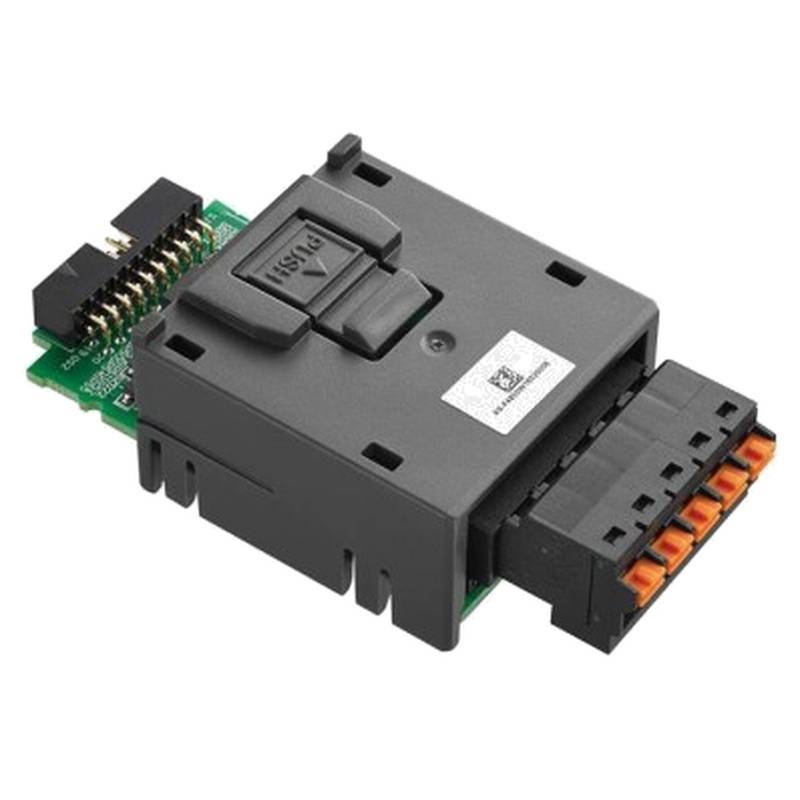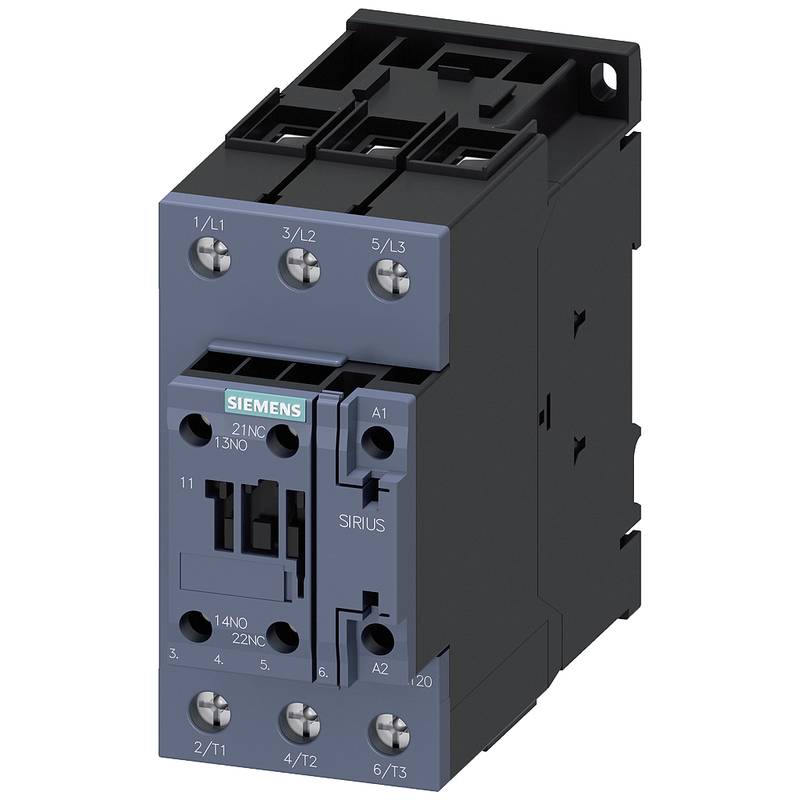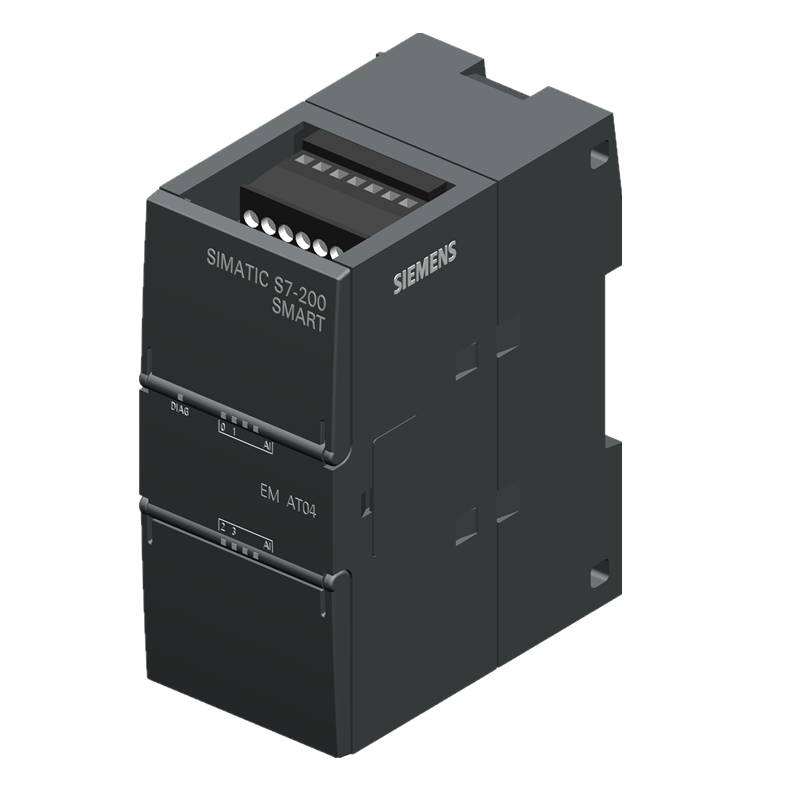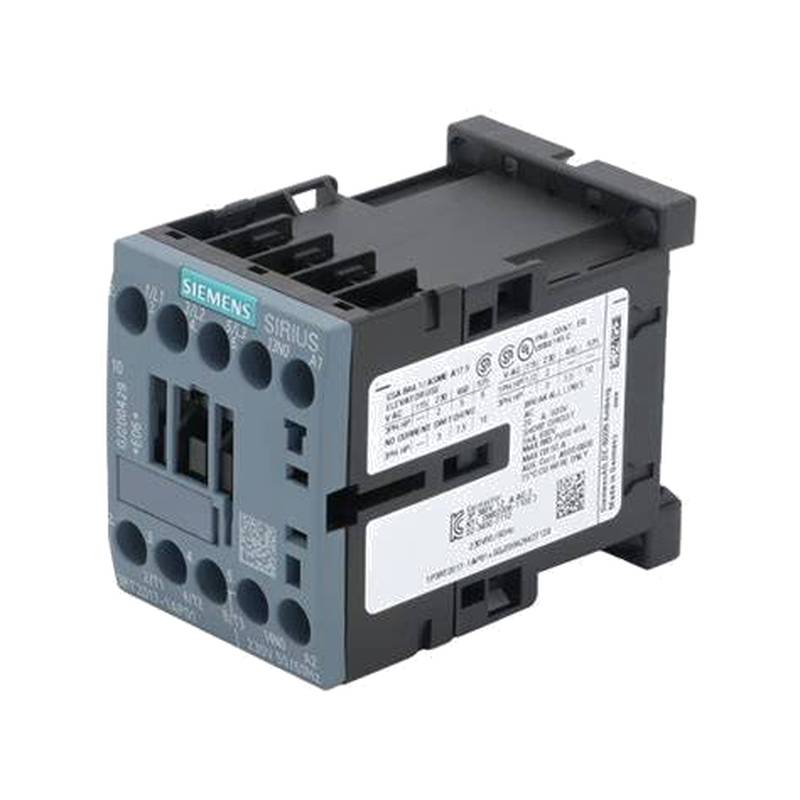
The Delta AS-F485 Industrial Bus Serial Communication Expansion Module is a critical component for expanding the communication capabilities of Delta's AS Series PLCs. This module enhances system connectivity by providing robust RS-485 serial communication, essential for integrating diverse industrial devices and networks. Its flexible master/slave configuration and direct integration with AS300 CPUs make it a valuable asset for complex automation tasks.
Product Specifications
| Feature | Specification |
| :------------------- | :------------------------------------------------- |
| Model Name | AS-F485 |
| Accessory Type | Option Card, Communications |
| Communication Protocol | RS-485 |
| Supported Modes | Master or Slave |
| Compatible Series | AS300, AS Series |
| Module Function | Adds an RS-485 serial communication port |
| Installation | Direct plug-in to CPU or AS00SCM-A module |
| Terminals | Push-in, screwless terminals for ease of wiring |
| IP Rating | IP20 |
| RoHS Status | ROHS3 Compliant |
| Dimensions (H x D) | 88mm x 78mm (approximate) |
Core Features & Market Positioning
The Delta AS-F485 distinguishes itself through its seamless integration within the Delta AS Series ecosystem. Its primary advantage lies in its ability to expand serial communication capabilities, specifically leveraging the widely adopted RS-485 protocol. This protocol is favored in industrial environments for its multi-drop networking, noise immunity, and long-distance transmission capabilities, making the AS-F485 ideal for connecting multiple devices like sensors, actuators, drives, and other controllers. Its positioning as a direct plug-in module for AS300 CPUs signifies an emphasis on ease of installation and system expansion, minimizing downtime and complexity. The module's support for both master and slave modes offers significant flexibility, allowing it to act as a central controller or a subordinate device within a communication network.
Key Application Scenarios
The versatility of the Delta AS-F485 makes it suitable for a wide array of industrial automation applications. Its RS-485 interface is particularly beneficial in scenarios requiring communication with multiple devices over a single bus. Common applications include:
Manufacturing Automation: Integrating various machines, PLCs, and Human-Machine Interfaces (HMIs) on a production line, enabling centralized monitoring and control of assembly processes. Process Control: Connecting sensors, transmitters, and actuators in industries like chemical processing, food and beverage, or water treatment, where reliable data acquisition and control are paramount. Building Automation: Facilitating communication between HVAC systems, lighting controls, security systems, and central management platforms. Data Acquisition Systems: Enabling the collection of data from distributed sensors and devices for analysis and reporting, often in conjunction with SCADA systems. Interfacing with Third-Party Devices: Connecting Delta PLCs with non-Delta equipment that utilizes the RS-485 protocol, ensuring interoperability.
Practical System Integration Guidance
Integrating the Delta AS-F485 module into an existing AS Series PLC system is designed for straightforwardness. The module plugs directly into a dedicated expansion slot on the AS300 series CPU or the AS00SCM-A module, utilizing screwless, push-in terminals for efficient wiring. When configuring the AS-F485 for communication, engineers must define its role as either a master or a slave within the RS-485 network using Delta's programming software, such as ISPSoft. Proper termination of the RS-485 bus is crucial for signal integrity, especially in longer networks. The AS-F485 is designed to be open and should be installed within a protective enclosure to guard against dust, humidity, vibrations, and electrical shock, with access ideally restricted to maintenance personnel.
Operation and Risk Mitigation
Proper operation of the AS-F485 relies on correct configuration within the PLC programming environment and adherence to electrical safety standards. When configured as a communication port, status LEDs on the module can indicate communication activity. Risks associated with serial communication modules typically involve incorrect wiring, data corruption, or network interference. To mitigate these risks:
Wiring: Double-check all RS-485 connections (Data+, Data-, Ground) for polarity and continuity. Ensure proper grounding to minimize noise. Configuration: Verify that the communication parameters (baud rate, data bits, parity, stop bits) match on all devices within the RS-485 network. Environment: Install the module in a suitable enclosure and ensure adequate ventilation to prevent overheating, as it is rated IP20 and requires protection from environmental factors. Master/Slave Conflicts: Ensure only one master is present in a network segment or that slave devices are not configured to transmit simultaneously without arbitration.
Scalability & Long-Term Value
The Delta AS-F485 contributes significantly to the scalability of Delta AS Series PLC systems. As a plug-in module, it allows for the easy expansion of communication ports without requiring a complete system overhaul. The AS300 series CPUs themselves support up to 32 extension modules, offering substantial room for growth. This modular approach ensures that automation systems can be adapted and expanded as production demands evolve, protecting the initial investment. Furthermore, Delta's commitment to developing integrated solutions, including IIoT capabilities through modules like the AS-FFTP01 for cloud connectivity, ensures that systems incorporating the AS-F485 can be future-proofed for integration into Industry 4.0 initiatives.
Frequently Asked Questions (FAQs)
Q1: What is the primary function of the Delta AS-F485 module?
The AS-F485 module's main purpose is to add an RS-485 serial communication port to Delta's AS Series PLCs. This expansion is crucial for integrating various industrial devices that rely on serial communication protocols.
It allows for multi-drop networking, enabling a single PLC port to communicate with multiple devices simultaneously. This enhances system flexibility and reduces the need for additional communication interfaces on the main PLC CPU.
By providing this dedicated RS-485 interface, the AS-F485 facilitates efficient data exchange in manufacturing, process control, and automation applications, supporting both master and slave configurations.
Q2: Can the AS-F485 module be used with different Delta PLC series?
The AS-F485 is specifically designed for compatibility with the Delta AS300 and AS Series Compact Modular Mid-range PLCs. Its design as a plug-in function card is tailored for the architecture of these specific PLC families.
While Delta offers other PLC series like the DVP series with integrated or add-on RS-485 ports, the AS-F485 is intended for the expansion capabilities of the AS Series. For DVP series, specific DVP-F485S or similar modules are available.
Always verify the compatibility matrix or product specifications for the exact PLC series to ensure proper integration and functionality when using expansion modules.
Q3: What communication modes does the AS-F485 support?
The Delta AS-F485 module supports two primary communication modes: master and slave. This dual capability provides significant flexibility in network design.
As a master, the AS-F485 can initiate communication with multiple slave devices on the RS-485 bus, controlling and querying them. This is typical for a PLC acting as a central controller.
As a slave, the module can respond to requests from a master device. This allows it to function as a remote I/O or data gathering point within a larger automation system.
Q4: How is the AS-F485 module installed in a PLC system?
Installation of the AS-F485 is straightforward, as it is a plug-in expansion module. It directly connects to a dedicated slot on the AS300 series CPU or the AS00SCM-A module.
The module features screwless, push-in terminals, which simplify the wiring process and improve maintenance efficiency. This design minimizes the time and effort required for installation.
Once physically installed, the module needs to be configured within the PLC programming software (e.g., ISPSoft) to define its communication parameters and operational mode (master/slave).
Q5: What are the technical specifications of the Delta AS-F485?
The AS-F485 is an RS-485 communication function card with an IP20 rating, indicating it requires protection from environmental elements. It supports both master and slave modes for flexible network integration.
It is compatible with the AS300 and broader AS Series of Delta PLCs, utilizing push-in terminals for ease of wiring and installation. The module is RoHS3 compliant.
Key technical details include its RS-485 protocol, direct DIN rail mounting capability, and a compact design suitable for integration into tight control panels.
Q6: What are the benefits of using RS-485 communication with the AS-F485?
RS-485 communication offers robust, long-distance data transmission, making it ideal for industrial environments. It is less susceptible to electrical noise compared to other serial protocols.
The multi-drop capability of RS-485 allows a single bus to connect numerous devices (up to 32 or more with repeaters), significantly reducing wiring complexity and costs.
This protocol is widely adopted, ensuring good compatibility with a vast range of industrial equipment, sensors, drives, and HMIs, providing broad integration possibilities for the AS-F485.
Q7: Can the AS-F485 be used for IIoT applications?
While the AS-F485 itself provides RS-485 serial communication, it serves as a foundational component for IIoT integration. It enables the PLC to communicate with devices that may then be connected to gateways.
For direct IIoT connectivity, Delta offers dedicated communication modules like the AS-FFTP01, which supports MQTT and OPC-UA for cloud and SCADA communication.
The AS-F485 facilitates data acquisition from the field, which can then be processed by the PLC and transmitted to higher-level IIoT platforms via other network modules.
Q8: How does the AS-F485 improve system scalability?
The AS-F485 enhances scalability by providing an additional communication interface without replacing the main PLC. It allows users to expand their network connectivity as needed.
The AS300 series supports up to 32 extension modules, meaning multiple AS-F485 modules or other communication/I/O modules can be added to meet growing system requirements.
This modular design allows for phased expansion of automation systems, adapting to increasing production demands or the integration of new equipment over time.
Q9: What programming software is used with the AS-F485?
The Delta AS-F485 module is programmed and configured using Delta's integrated engineering software, typically ISPSoft for the AS Series PLCs. ISPSoft allows for hardware configuration, network setup, and ladder logic or other programming language development.
This software provides a unified environment for managing the entire PLC system, including setting up communication parameters for the AS-F485, defining its master/slave role, and configuring baud rates and other serial communication settings.
Users can also leverage other Delta software like DIAView for visualization or DIADesigner for drive configuration, creating a cohesive automation solution.
Q10: Are there any specific wiring considerations for the AS-F485?
Yes, proper wiring is critical for RS-485 communication. Ensure correct polarity for the A+ (Data+) and B- (Data-) lines between devices. Proper grounding is also essential to mitigate noise.
The AS-F485 uses push-in terminals, which facilitate quick and secure connections. However, always ensure the wires are securely seated and that no stray conductors are present.
For longer cable runs or networks with many devices, consider using shielded twisted-pair cables and ensure termination resistors are correctly applied at the ends of the RS-485 bus to prevent signal reflections.

























